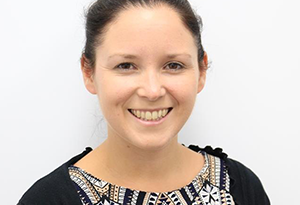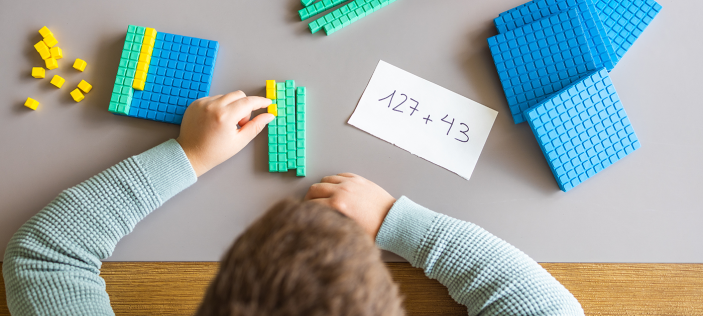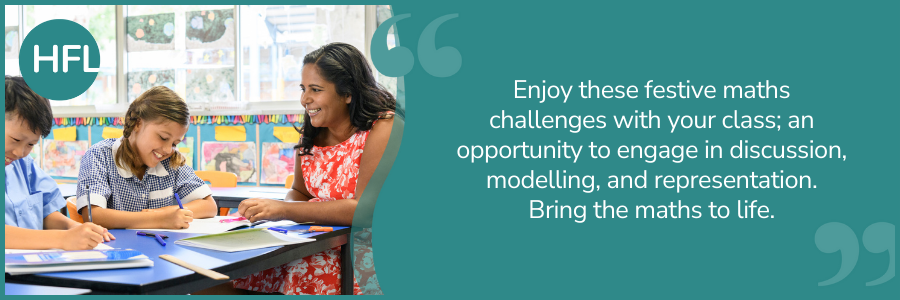
The HFL Education Festive 5 maths challenge is back by popular demand.
With opportunities to make connections across the maths curriculum, rehearse key skills and continue to develop mathematical oracy,- what’s not to enjoy?
Greater depth thinking is complex. It’s more than just knowing ‘more stuff’.
Key behaviours include being able to:
• be curious by asking interesting, mathematical questions
• communicate ideas and discoveries with increasing clarity
• collaborate with others effectively
• spot patterns and use them
• connect different mathematical concepts and domains together, causing ‘aha’ moments when they recognise that they have seen something similar before
• examine arguments and provide counter-arguments with some proof
• evaluate their own learning to refine their thinking.
The HFL Education maths team are passionate about the importance of providing all children with opportunity to develop these behaviours.
So how can the Festive 5 maths challenges support with this?
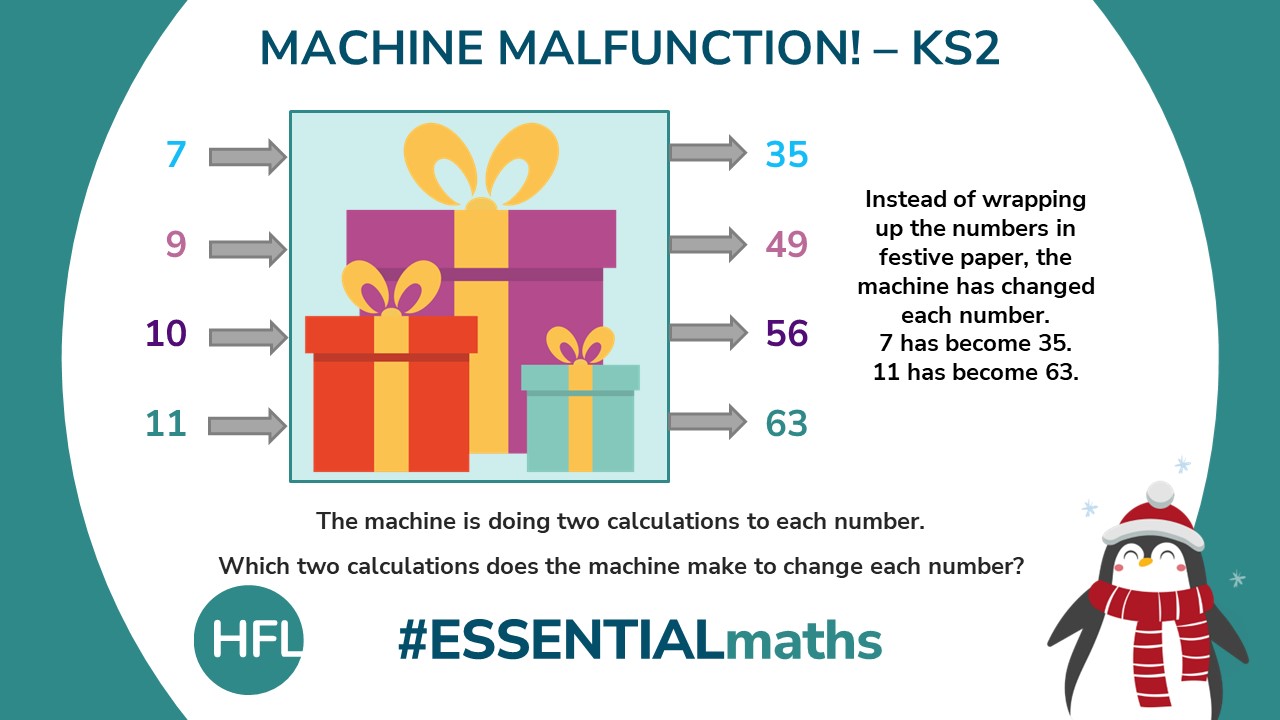
This is a great opportunity to rehearse and recall multiplication and division facts which, as we know, are key foundational facts for maths in key stage 2.
Connections to make in order to solve this problem:
- Known facts
Do children recognise that the output numbers are all multiples of 7? - The relationship between the input and output
Can children use what they know about the multiples of 7 to identify the connection to the input number?
Possible problem-solving strategies:
- Solve a simpler but related problem (see the KS1 version in the slide deck)
- Working backwards
- Draw a diagram
- Make a table
- Try then improve
Key sentence frames:
I noticed that…
I know… so…
The rule is…
As a further challenge, children could choose their own input numbers for the machine and calculate the output or in fact, create their own machine with its own rules.
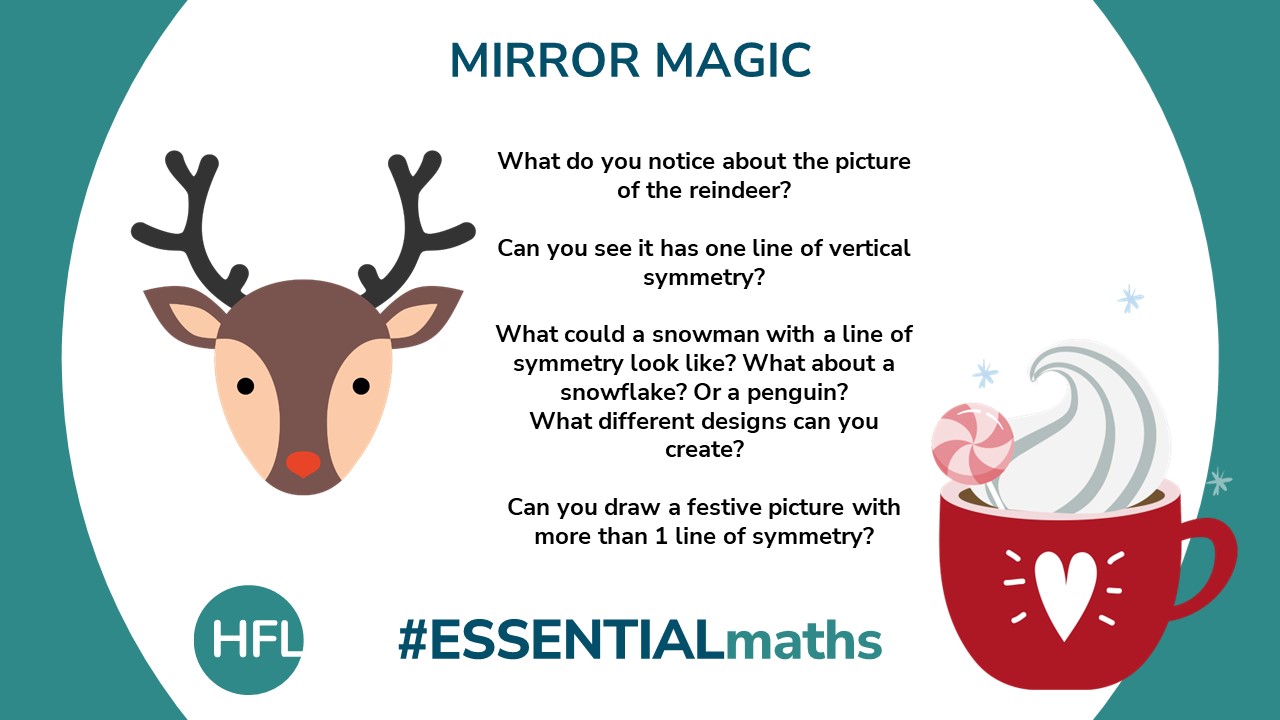
One of the recommendations from Ofsted’s ‘Coordinating mathematical success: the mathematics subject report’ (July 2023) was that in primary schools:
“geometry knowledge is sequenced throughout, rather than at the end of, each year’s curriculum”
Symmetry appears explicitly in the Year 2 and Year 4 National Curriculum programmes of study. This challenge would provide an introduction for Year 2 and a rehearsal opportunity in Key Stage 2.
Connections to make in order to solve this problem:
- Symmetry in 2-D shapes presented in different orientations
Possible problem-solving strategies:
- Solve a simpler but related problem (starting with 2-D shape symmetry)
- Draw a diagram
- Try then improve
- Make a model
Key sentence frames:
- I can start here because…
- Mine is different because…
- It worked because…
- I have checked by…
Download the full set of slides (including solutions to the problems) :
The HFL Education Primary Maths team can work with you in school to develop reasoning and problem-solving across the maths curriculum through The Reasoning and Problem-Solving Package.
To keep up to date: Join our Primary Subject Leaders’ mailing list
To subscribe to our blogs: Get our blogs straight to your inbox
References:
Ofsted (2023) Coordinating mathematical success: the mathematics subject report.
Available at: www.gov.uk/government/publications/subject-report-series-maths/coordinating-mathematical-success-the-mathematics-subject-report
(Accessed: 23 November 2023)
